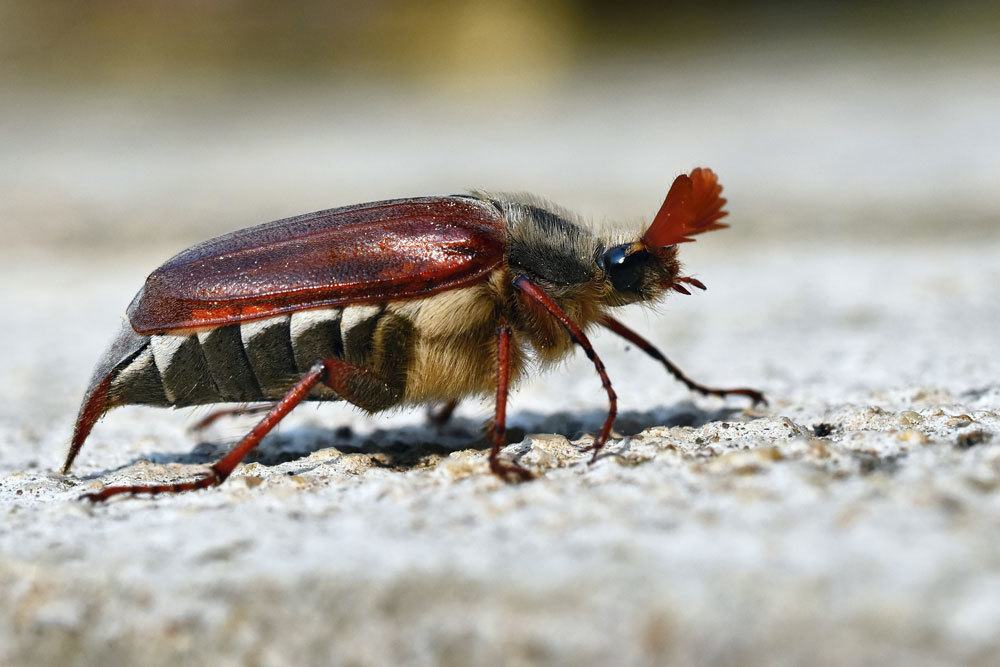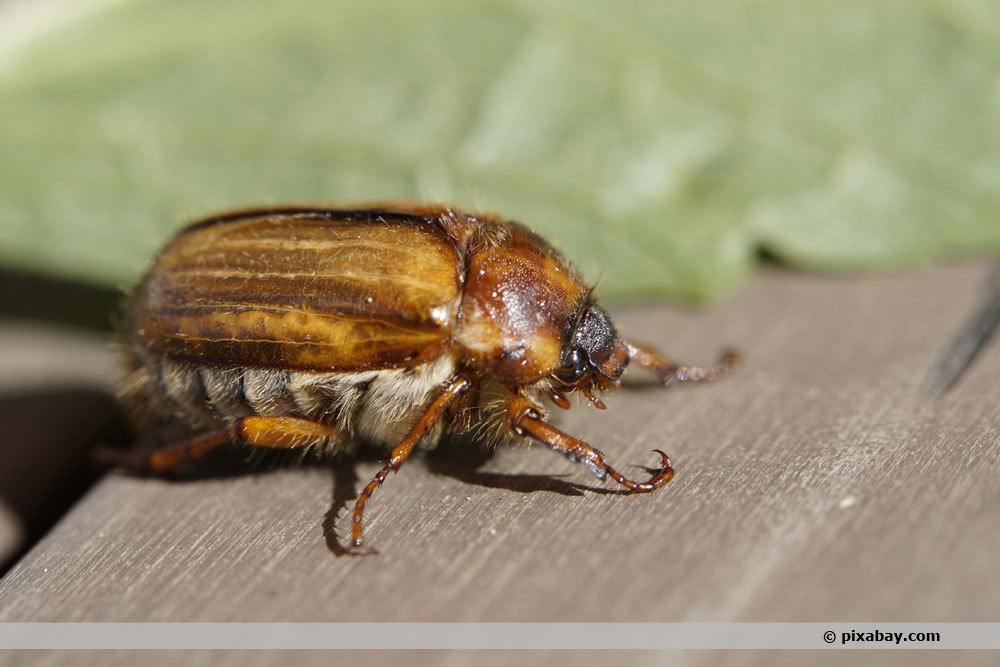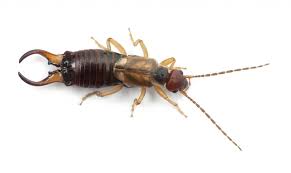May beetles and June beetles are among the best-known flying insects that like to hang out in German gardens from May to July. Children like to catch them, cats chase them and gardeners and farmers despair when their plants are used as a food source by the beetles, as they are extremely hungry. If they become a summer pest, it is important to combat them. But how dangerous are they and do they harm humans and animals?
Hazard
All-clear: harmless for humans and animals
You don’t have to worry if you pick up June or May beetles or if your cat eats one of them. They are not poisonous, stinging or bloodsucking. In fact, for domestic cats, they represent a snack that they hunt under their own power, which is good for the instinct of the house cat. Although the feet, which are equipped with claws, can cling, which hurts a little, but May and June beetles are not dangerous to humans and animals. The adults and grubs, the larvae of the beetles, however, can be dangerous to your garden plants and lawn because of their large appetites.
Tip: many people are afraid of June beetles when they fly quickly toward them. However, this is not an attack on the part of the beetle, but the staggering way they fly, as they are not as good at flying as other insects.

How dangerous are adults?
June and May beetles can quickly become a nuisance due to their feeding behavior, but it can still be contained. The two beetles differ in terms of the plant parts they prefer and the season they feed to prepare for reproduction. The differences follow in detail.
May beetle
Melolontha species feed primarily on leaves of numerous tree species. They prefer free-standing deciduous trees and woody shrubs, which they eat completely bare together in larger groups within a few weeks. They feed exclusively on the leaves in May, which gives the trees enough time in the summer to regrow them. For this reason, May beetles do not pose a threat to plants per se, as plants can easily recover.
June beetle
The June beetle, on the other hand, can become a nuisance starting in July, as it continues to eat flowers and leaves of typical garden plants into the fall. It is less interested in trees, but will even eat rose bushes or other ornamental plants. In the process, plants can suffer massive losses of plant material and some lose their actual winter protection. This is the reason why many gardeners want to get rid of the beetles. They also like to snack on the lawn, which can lead to an unsightly lawn.

Although the adults of the beetles use the plant material, they do not count as a pest. It does happen every year that a particularly large population develops, which naturally leads to more leaves and flowers being eaten. However, it really becomes problematic when there are many beetle larvae in the soil that can grow into a harmful pest.

White grubs
Why are grubs dangerous?
The larvae of May and June beetles are called grubs, which remain in the soil for years after hatching.
Depending on the beetle species, the duration of this period varies:
May beetle: 3 – 5 years, usually 4 years.
June beetle: 2 – 3 years maximum
During this period, the larvae feed on underground plant materials, mainly roots, but also bulbs and tubers, anything they can get between their mouthparts. And therein lies the problem. Many larvae feed on roots, but grubs do this for years, and with each year they grow larger and eat more. This can severely compromise plant health, especially if you’re dealing with sensitive plants. It doesn’t matter if you have May or June grubs in your garden, the young can feed for a long period of time until they pupate and then go in search of mates.
Control
Fighting June and May beetle larvae
If you want to get rid of them, you first need to look for some symptoms. Since the larvae feed mainly on the roots, the plants visibly suffer because the supply of nutrients and water is cut off.
Typical symptoms of an infestation are:
weak and young trees die
rose bushes die
lawns present dry and yellow spots
Lawns dry up and eventually die
Symptoms are most noticeable when plants are well cared for. Even if you take care of your lawn in an ideal way and it still dies, it may be due to white grubs. If you notice over the spring and summer that there are a lot of June and May bugs in your yard, the suspicion is heightened. To get rid of them, the main thing you need to do is good prevention.
This is implemented as follows to combat the grubs:
- allow large areas of the garden to dry out.
- the beetle larvae need moist soil and die as soon as it is too dry or the UV radiation is too high
- water only single plants that need a lot of water
- the females will now look elsewhere for places to lay their broods
- dig the soil with a cultivator whose material contains zinc
- this is effective against the beetle larvae
You can also prevent larvae from settling by bringing natural predators into your garden.
These include:
- Moles
- Birds of all kinds
- Shrews
- Cats
- Bats
These animals feed wonderfully on the grubs of cockchafer and June beetles, as they provide a lot of energy and nutrients. If the beetle infestation is already in full swing, you need to combat it specifically. For this purpose, a variety of means and methods that do not harm the garden and can always be applied.
Scent traps
Scent traps are excellent for trapping adult males to prevent them from reaching females to fertilize them. These attract the males via pheromones into the trap, which can no longer be escaped from the inside. The male is therefore trapped and can no longer get out of the trap. These traps are easy to set up and are available in specialized shops. Depending on the manufacturer, the cost of scent traps varies between 20 and 50 euros.
Milling
Simply mill the garden regularly from late May to early August. The tiller ensures that the soil is dug up, which exposes the beetle larvae. These are now exposed to the sun and predators without protection. Often many of the young die during the milling process and many of the others are subsequently eaten by other animals or die in the warm sun. If you don’t have a tiller, you can rent one in hardware stores for about 65 euros per day.
Parasitic fungi (Beauveria brongniartii)
The use of Beauveria brongniartii is a good method to control the cockchafer and June beetle. These are simply placed in the soil and from then on they take care of the pesky pests themselves. These are spread directly on the lawn or the surface of the soil in the summer. The fungi now begin to spread in the soil and kill the beetle larvae from the inside, after they have consolidated in the grubs. Best of all, the fungi have a long-term effect of up to 15 years. Cost is about 50 euros for two kilograms.
Nematodes
They are the last weapon in the fight against cockchafer and June beetle, which are dangerous in the garden. Nematodes are filamentous fungi that are distributed through water. Here they infest the grubs and begin to kill them from the inside. This is done with the nematodes particularly quickly and effectively. The cost of this is calculated at about 1.1 euros per m² of lawn.
Tip: please do not use chemical insecticides to get rid of the beetle larvae. These have a negative effect on the soil in your garden and can affect your health, especially if you grow vegetables or fruit.


